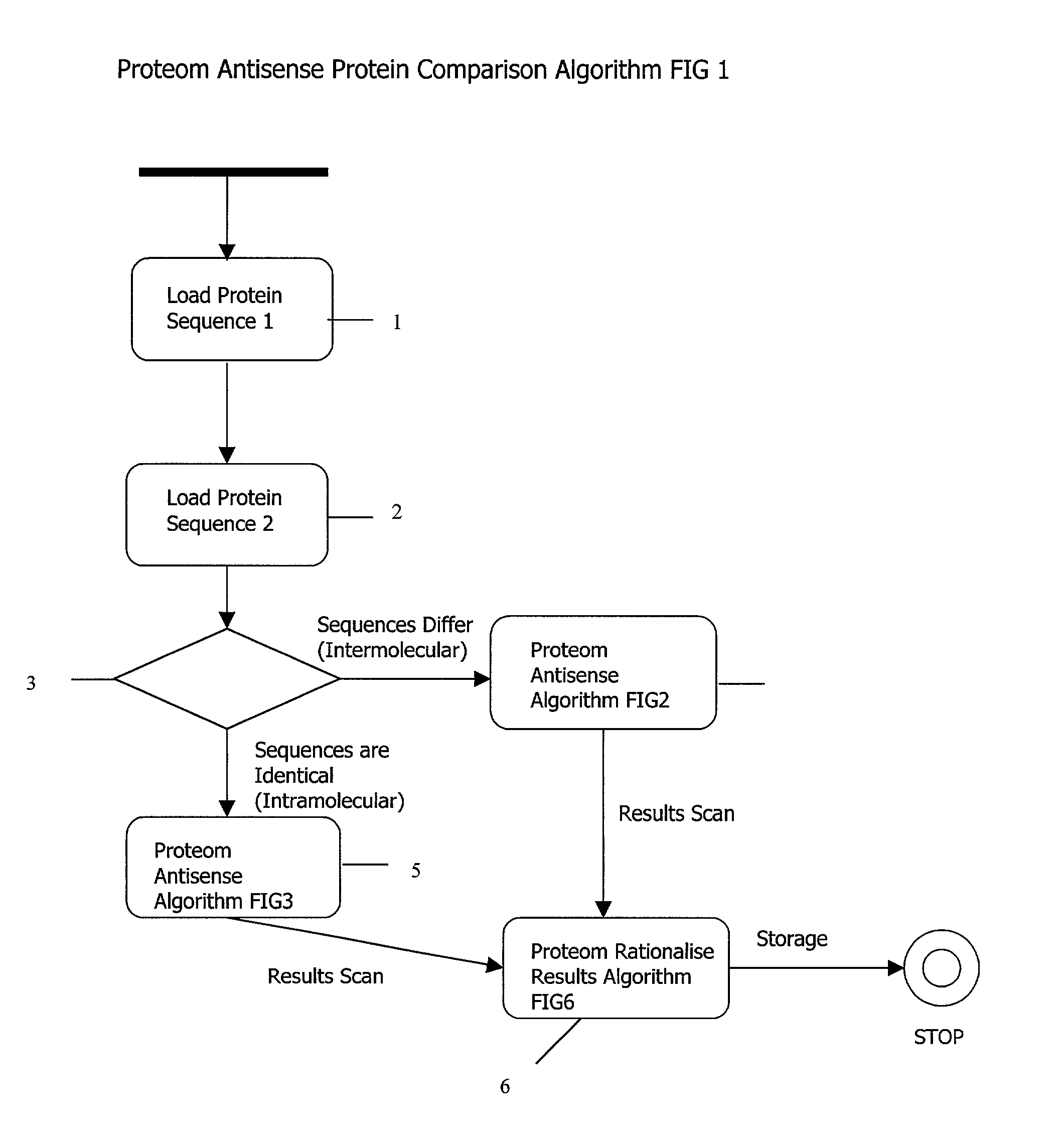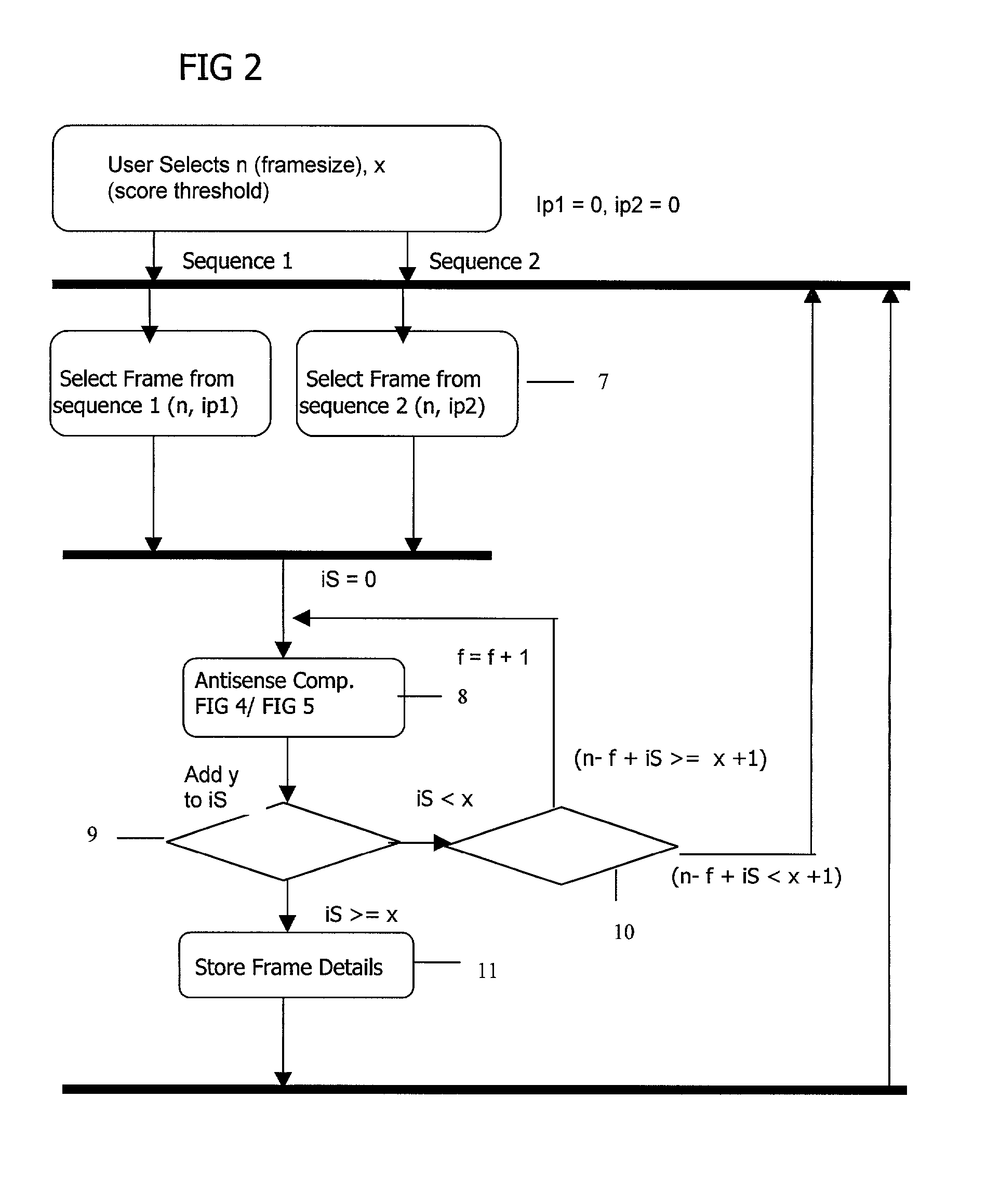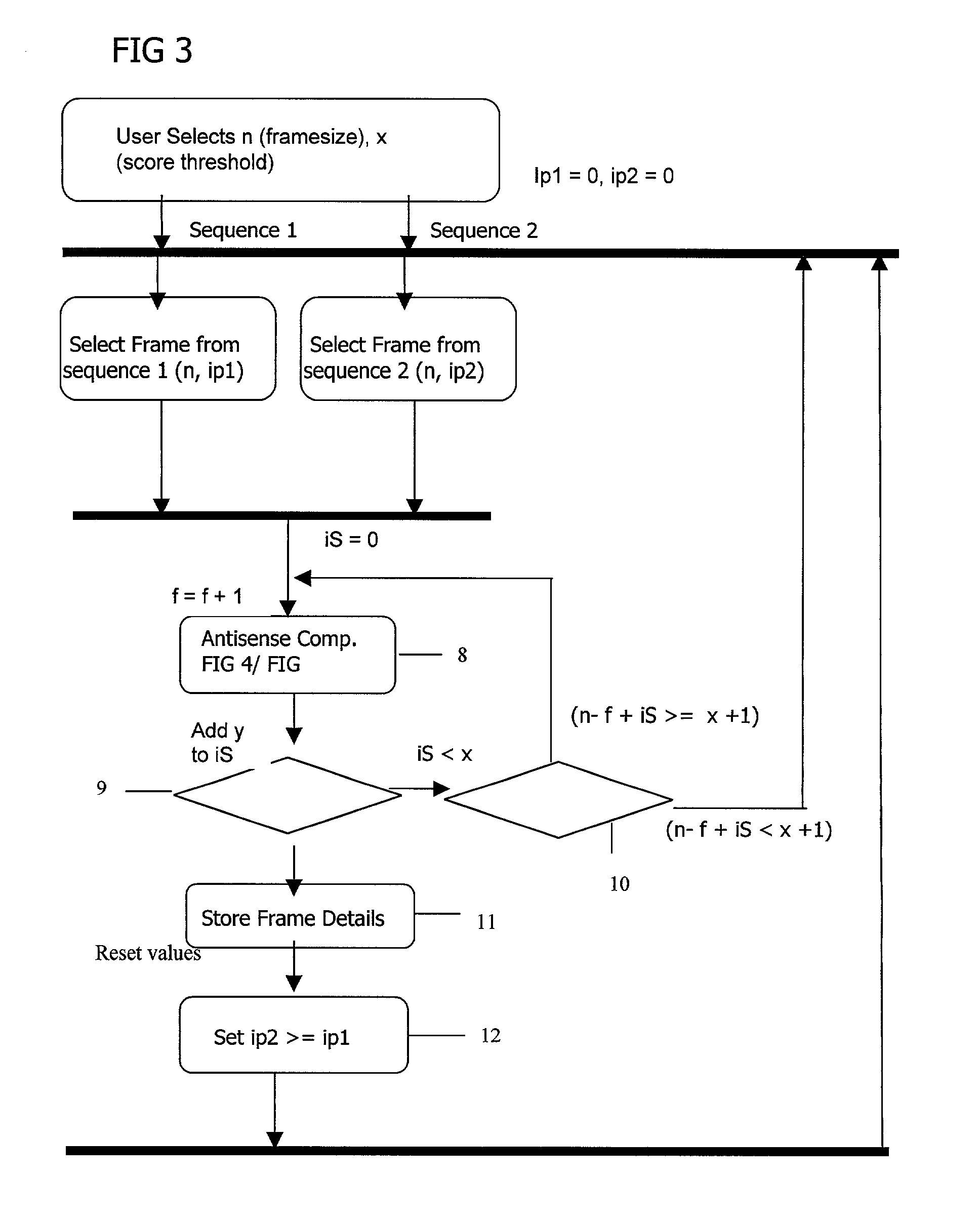Complementary peptide ligands generated from the human genome
a technology of complementary peptides and human genomes, applied in the field of complementary peptide ligands generated from the human genome, can solve the problems of high throughput screening technologies, non-traditional protein-protein targets, and limited success in the pharmaceutical community, so as to accelerate the identification and optimization of small peptides, reduce the complexity of human genetic information, and enhance drug design and discovery
- Summary
- Abstract
- Description
- Claims
- Application Information
AI Technical Summary
Benefits of technology
Problems solved by technology
Method used
Image
Examples
example 2
Algorithm Determined Sequence In IL-1 Receptor Binding to IL-1.beta.
[0095] The programme identified the antisense region LITVLNI in the interleukin 1 type 1 receptor (IL-1R). The biological relevance of this peptide has been demonstrated and these findings are summarised below:
[0096] Program picked out antisense region LITVLNI in the IL-1R receptor.
[0097] This peptide was shown to inhibit the biological activity of IL-1.beta. in two independent in vitro bioassays.
[0098] The effect is dependent on the peptide sequence.
[0099] The same effect is also seen in a Serum Amyloid IL-1 assay (i.e. assay independence).
[0100] The peptide was shown to bind directly to IL-1 by using biosensing techniques
example 3
Demonstration of the Utility of the Process when Applied to the Human Genome
[0101] 1. DNA-Binding Proteins
[0102] Sequence-specific DNA binding by proteins controls transcription (Pabo and Sauer, 1992), recombination (Craig, 1988), restriction (Pingoud and Jeltsch, 1997) and replication (Margulies and Kaguni, 1996). Sequence requirements are usually determined by assays that measure the effects of mutations on binding of DNA and amino acid residues implicated in these interactions.
[0103] The central role of DNA binding proteins in the cell cycle means they have a key role in cell proliferation, tumour formation and progression.
[0104] The identification of anti-sense peptides targetted to such proteins have the potential to be useful targets for the development of therapeutic compounds for the treatment of cancer.
[0105] For instance, Koivunen et al., 1999, identified a novel cyclic decapeptide that not only targetted angiogenic (developing) blood vessels but also inhibited the matrix ...
example 4
[0111] The human genome, which is estimated to contain between 80,000 and 140,000 genes was screened for intermolecular peptides using the method described in patent application number GB 9927485.4, filed Nov. 19, 1999. The gene, database accession number, its predicted interacting peptides and their position within the coding sequence of the gene are shown in the attached sequence listing: SEQ ID Nos. [1-3622].
PUM
| Property | Measurement | Unit |
|---|---|---|
| Interaction | aaaaa | aaaaa |
Abstract
Description
Claims
Application Information
 Login to View More
Login to View More - R&D
- Intellectual Property
- Life Sciences
- Materials
- Tech Scout
- Unparalleled Data Quality
- Higher Quality Content
- 60% Fewer Hallucinations
Browse by: Latest US Patents, China's latest patents, Technical Efficacy Thesaurus, Application Domain, Technology Topic, Popular Technical Reports.
© 2025 PatSnap. All rights reserved.Legal|Privacy policy|Modern Slavery Act Transparency Statement|Sitemap|About US| Contact US: help@patsnap.com



